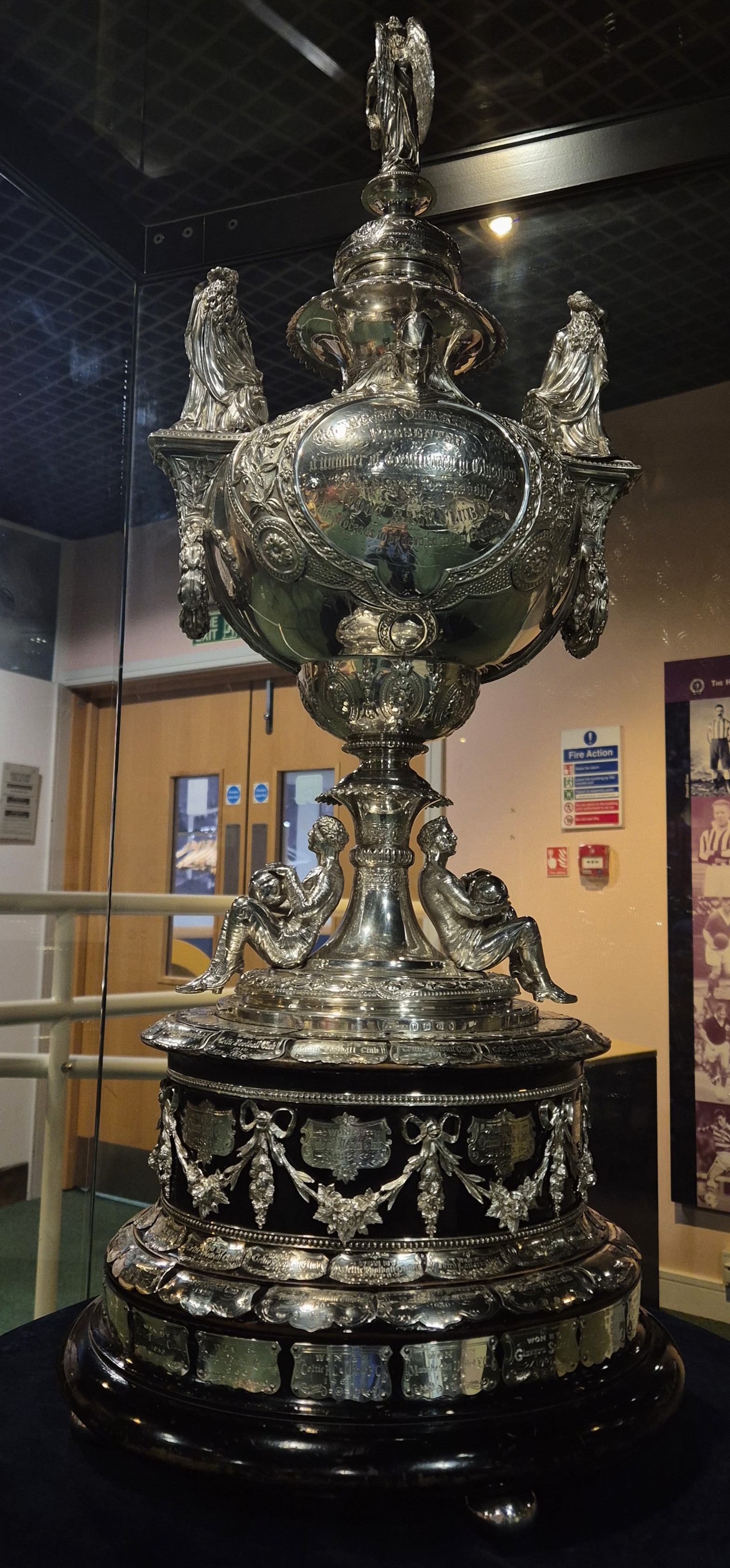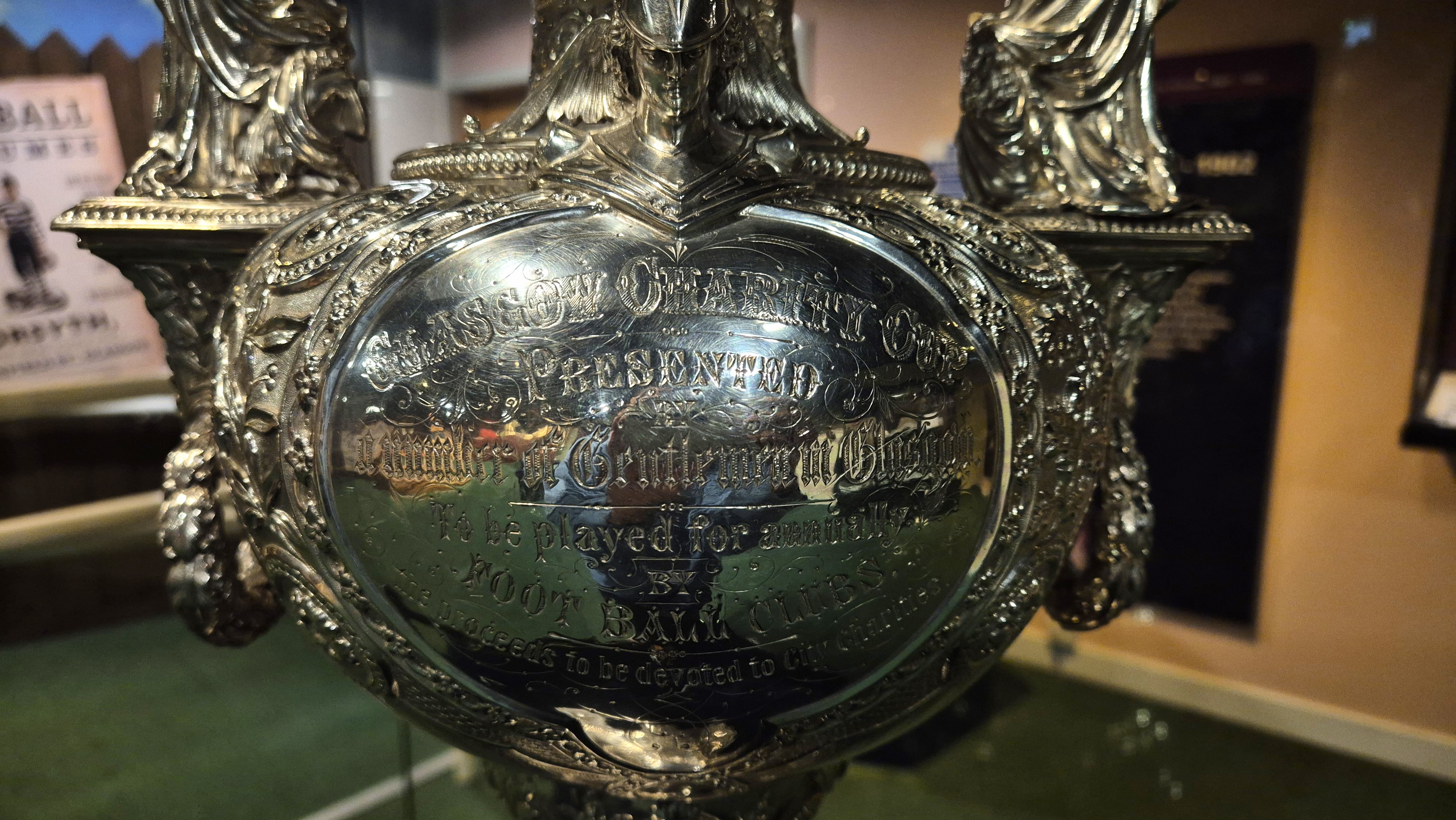THE GLASGOW MERCHANTS' CHARITY CUP
The Glasgow Charity Cup was established in 1877 as a charitable institution. During this period, Glasgow was thriving due to its industrial economy, yet the city faced numerous health challenges, including tuberculosis and bronchitis. The International Exhibition posed as a game changer for the people of Glasgow. The existing football clubs in Glasgow were already donating money for charitable causes for the benefit of its people.

The Charity Cup is a great example of how a city where football has always been the mainstream, epicentre and a historically significant element came forward to work for its own people through collective efforts. Football is not just a sport in Glasgow, it is a historically significant charitable sport which is still played with the same zeal even today. The sport transformed lives by fostering unity among diverse groups, encouraging compassion, and creating friendships among strangers through shared enthusiasm for the game.

Several clubs like Rangers, Celtic, Third Lanark, Vale of Leven, Queen’s Park, Hibernian, Clyde, Partick Thistle and Renton played for the Cup. In 1886 Renton won the trophy and a phenomenal sum of £5620 was raised for charitable causes. The charitable proceeds from 1887-88 were also extended to Edinburgh and Dumbartonshire as they too competed for the Cup. Ultimately, the Cup was discontinued in 1966, with Glasgow Select being the final champions to lift the trophy.

Throughout its history, the Charity Cup featured many matches played for good causes, highlighting the commitment to address social issues like tragedies or disasters. The Cup was also featured in the International Exhibition and the Charity Cup Committee was given huge amount to host the events. Over a period of time, several changes were made to the rules and the nature of the Cup changed along with an evolving society. However, one aspect remained unchanged, and it was the Cup’s commitment to contribute to the local charitable causes.

The money which was dispersed in the name of charity was not always disclosed. But the Cup transformed the lives of Glaswegians, through its commitment to uplift its society. This in turn, fostered respect and passion pouring in from the people for this sport. Football became more than just a game; it became a powerful vehicle for social change. Football is an emotion, and this Cup represents a crucial chapter in the city's history. The legacy of the Cup is well preserved in our Museum in Gallery 1867-1902, which represents the early days of football in Scotland. The trophy was donated to the Museum by the Scottish Football Association, and we are proud to have it in our collection. Come witness this beautiful silver trophy and delve into the time of the trophy’s glory. “It was good while it lasted, and it did a great job” is an acknowledgement of its ongoing legacy.
By Aparna Negi, Curatorial Assistant at the Scottish Football Museum.
We are proud to be a member of the Association of Scottish Visitor Attractions (ASVA) for 2024/25.

Book your place
Discover a national football collection to educate and inspire future generations.
Book online or call us today on 0141 616 6139.
Tickets from £8
Tours from 45 minutes

